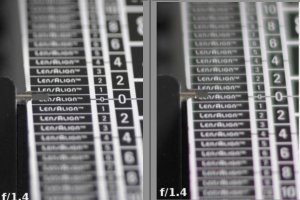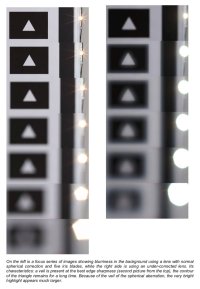I'm not particularly attracted to very fast lenses anyway, but I certainly hope that they won't try to copy the 50mm f1.2 L RF. I'll be the only here but I don't think that it's a great lens. It's amazingly sharp, incredible, even, but I think that it's got very poor rendition in depth, and that bokeh quality degrades excessively with image height.
I like to use that image from Opticallimits to show what I mean :
View attachment 181143
What I find very seductive with this photo is that there is a clear hierarchy of different planes according to distance, even within the blur, and that it remains readable. The tree behind the road sign is actually blurred, but not as much as the distant background. Besides, there is no trace whatsoever of double edges.
The 50mm RF, on the other hand, seems to flatten anything in the background and doesn't hierarchies well the different planes. In the following photo from Dpreview (shot at f4), I found it particularly hard to know if the objects on the beach were trunks on a distant beach or branches on a closer beach, the rendering is quite nervous and edgy, and there seems to be no gradual progression of the blur between the twigs in the centre near the path and the beach behind :
View attachment 181144
I'm not exactly sure but I have read that the cause for that could be that some aberrations, particularly spherical aberration, are controlled in an excessively ideal way. It's great for resolution in the focal plane and for reducing focus shift, but apparently leaving a carefully tuned degree of aberrations here and there may actually benefit rendering in depth and bokeh quality in the background.
The lens also exhibits a lot of mechanical vignetting and bokeh quality degrades rapidly with image height.
It's probably an engineering tour de force, a superbly built lens (I'm expecting Lensrentals' measurements to show low sample variation, just like with most of Canon's newest designs, and their teardown clever mechanical design inside, as always), but I don't think it's a superbly well rounded photographic tool and I think that good rendering has been excessively compromised in the pursuit of other goals.
I have the same criticism against the 35 L II, and to a lesser degree the 85mm f1.4 IS USM. The trend that Canon follows with their recent lenses may actually be enough for me to abandon the system. I don't think that I've been particulalry attracted to a Canon lens since the 40mm STM (a very average, but IMO pretty well balanced lens, and very well priced).
I have the opposite opinion of Nikon's 58mm f1.4G prime : here I think that some aspects of rendering have been excessively prioritised at the cost of some other basic performance figures.
It's probably a very fine line to carefully thread between these two extremes but I think that this is were my ideal lens would be right now, and I hope that this is where Nikon's S primes, including the 50mm f1.2, and Canon's future primes, will be.






